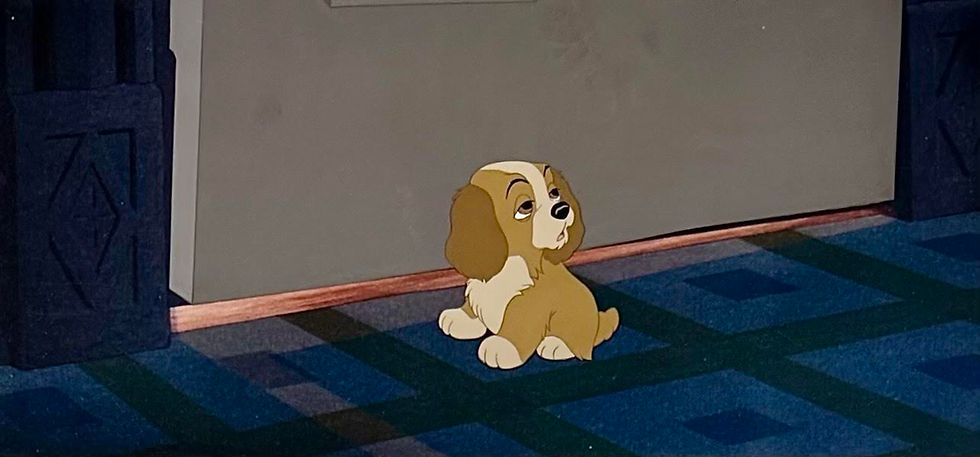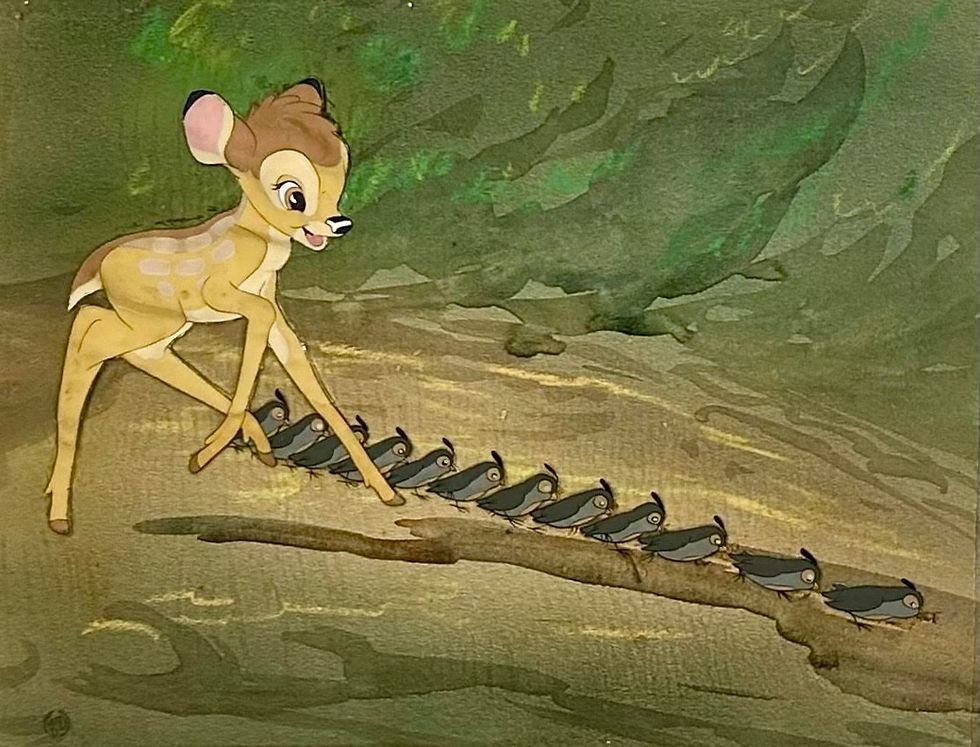Original Production Animation Drawing of Princess Aurora from "Sleeping Beauty," 1959
- Untitled Art Gallery

- Mar 26, 2020
- 3 min read

Original production animation drawing of Princess Aurora in graphite pencil from "Sleeping Beauty," 1959, Walt Disney Studios; Numbered 63 in pencil lower right; Size - Princess Aurora 8 1/4 x 4", Sheet 12 1/2 x 15 1/2"; Unframed. "Don't touch anything!" - Flora, Fauna, and Merryweather
"Sleeping Beauty" is a Walt Disney animated full length feature film and was based on "The Sleeping Beauty" by Charles Perrault and "Little Briar Rose" by The Brothers Grimm. The film was the sixteenth in the Walt Disney Animated Classics series, and it was released to theaters on January 29, 1959 by Buena Vista Distribution. This was to be the last Disney adaptation of a fairy tale for many years, both because of its initial mixed critical reception, and because of it's under performance at the box office. The Walt Disney studio did not return to the fairy tale genre until 30 years later, with the release of "The Little Mermaid" in 1989. "Sleeping Beauty" was directed by Les Clark, Eric Larson, and Wolfgang Reitherman, under the supervision of Clyde Geronimi. The story was written by Joe Rinaldi, Winston Hibler, Bill Peet, Ted Sears, Ralph Wright, and Milt Banta. The film's musical score and songs, featuring the Graunke Symphony Orchestra, was under the direction of George Bruns. Arrangements and/or adaptations were derived from numbers from the 1890 "Sleeping Beauty Ballet" by Pyotr Ilyich Tchaikovsky. In addition, Igor Stravinsky's music compositions were also adapted into the film. "Sleeping Beauty" was the first animated film to be photographed in the Super Technirama 70 widescreen process, as well as the second full-length animated feature film to be filmed in anamorphic widescreen; following "Lady and the Tramp" four years earlier. In select first-run engagements, the film was presented in Super Technirama 70 and 6-channel stereophonic sound. "Sleeping Beauty" introduced two characters that would become universal favorites; Maleficent and Princess Aurora. Aurora, along with Snow White and Cinderella would be forever immortalized in the public's view as the three greatest Disney Princesses. The original design for Aurora was developed by Tom Oreb, who based the character on the famed Hollywood actress Audrey Hepburn; known for her thin frame and a very graceful demeanor. Marc Davis, the head animator for Aurora, would continue the development of the character by morphing her general appearance and the clothing of the heroine. The fine tuning of the character continued so that she could be combined with the very angular forms present in the Eyvind Earle hand painted backgrounds. As with other Disney films, an actress was hired as a live-action model (as a guide for the animators) for Princess Aurora. Helene Stanley, who was also the model for Cinderella in 1950, became the model for the heroine. It is interesting to note that prior to marrying Marc Davis in 1956, Alice (Davis) designed some of costumes worn by Stanley in her acting role as Aurora.
In 1952, the professional opera singer Mary Costa, after meeting people at a party with her future husband director Frank Tashlin, auditioned for the part of Disney's Princess Aurora. Walt Disney called her personally within hours of the audition to inform her that the part was hers. The success of the film "Sleeping Beauty," owes a chuck of those accolades to the voice of Mary Costa. Her songs were some of the most beautiful ever sung by a Disney Princess. In November 1999 Mary Costa received the Disney Legends Award, and her hand prints are now a permanent part of the Disney Legends Plaza at the entrance to Walt Disney Studios. The majority of the film does not have Aurora on the big screen, but rather her disguised form Briar Rose. Even though Princess Aurora is one of the most loved of all the Disney Princesses, she has least amount of screen time of any prior Princess; only 18 minutes to be exact and during those 18 minutes she only has 18 lines. This drawing is an absolutely wonderful work from one of the most important key scenes in the film, when Maleficent has enchanted Princess Aurora. Slowly Aurora climbs a stone staircase leading into an empty room, where suddenly a spinning wheel appears. Soon Maleficent is heard urging Aurora to touch the spindle (thereby fulfilling the evil curse) as the three good fairies are quickly flying to save her; all the while shouting "Don't touch anything!" This is a very rare original production drawing of Princess Aurora wearing her crown. She has both eyes open and her hand is just in front of her, soon to be outstretched towards the spindle of the spinning wheel.
#maleficent #sleepingbeauty #diablo #MarcDavis #sleepingbeauty1959 #Disney #animationart #cel #animationcel #productioncel #animation #drawing #productiondrawing #animationcollection #WaltDisney #castingthespell #untitledartgallery #EleanorAudley #Goons #Disneycel #Disneyvillain #EyvindEarle #CharlesPerrault #LesClark #EricLarson #WolfgangReitherman #JoeRinaldi #WinstonHibler #BillPeet #TedSears #RalphWright #MiltBanta #PrincePhillip #ThreeGoodFairies #Flora #Fauna #Merryweather #KingHubert #KingStefan #PrincessAurora #BriarRose #animationdrawing #Diablo






